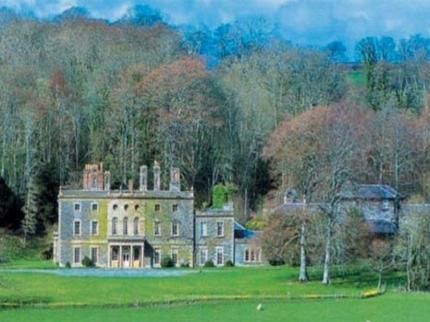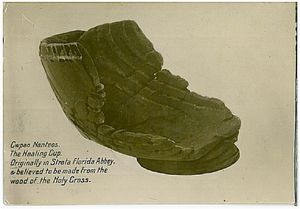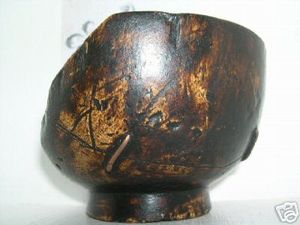
Nanteos Mansion, near Aberystwyth, England, was built in the 18th Century, has been linked to the Holy Grail and sports many ghost stories.
The Grail has captivated religious experts for centuries, spawning myriad theories about its location and inspiring numerous fictional accounts from the Middle Ages onwards.

Cwpan Nanteos: The Healing Cup. Originally in Strata Florida Abgey, and believed to be made from the wood of the Holy Cross.
After receiving a tip-off, a team of eight officers and a police dog arrived on Sunday morning at the Crown Inn, a village pub in
the rural English county of Herefordshire.
"They turned the place upside down. They came with fibre optic cameras to look in all the corners and nooks and crannies, and under the floorboards ... they were clearly serious about it," the pub's landlady, Di Franklyn, said.
Police said the relic, a dark wooden cup kept inside a blue velvet bag, had been stolen from a house in the area about a month ago. Photographs available online show a bowl-shaped vessel with around half its side missing.
"We get a few rogues and scallywags in the pub, but no one who's quite on the level of stealing a priceless ancient artefact," Franklyn said.
The cup takes its name from Nanteos Mansion, a country house in Wales where the vessel is reported to have been stored until 1952 after 16th-century monks fleeing King Henry VIII's dissolution of England's monasteries sought refuge there.
The cup was said to have been brought to Britain after Jesus' death by Joseph of Arimathea, the biblical figure who provided Christ with a tomb and, according to legend, brought Christianity to Britain.
Scientists who have examined the cup have said it almost certainly dates from many centuries after the crucifixion, and is not made of the olive wood that might have been expected for a Middle Eastern drinking vessel.

Comment: The police report said the cup went missing after it had been loaned to a seriously-ill woman because of its healing powers and was stolen sometime between July 7-14 but the remaining pieces were not taken. The cup was in the care of a woman whose family once owned the Nanteos Mansion.